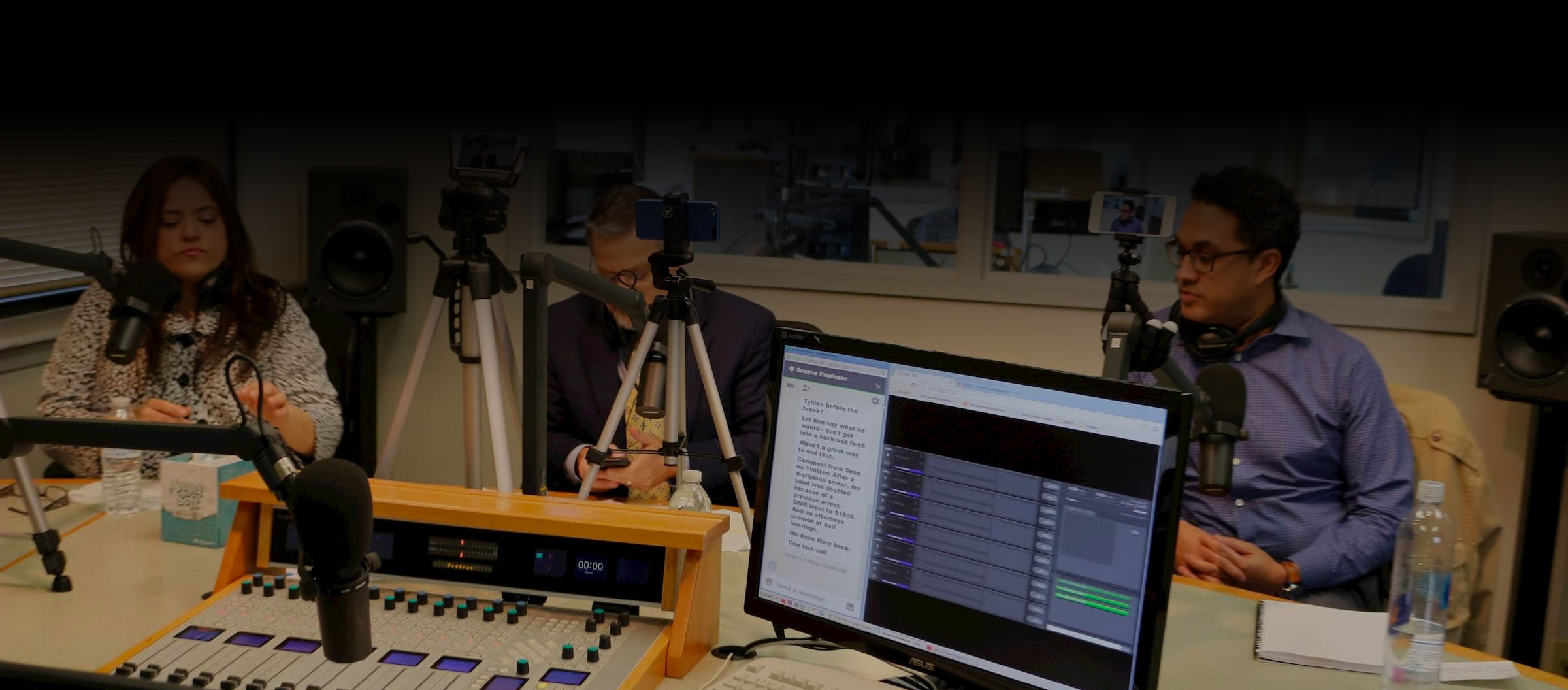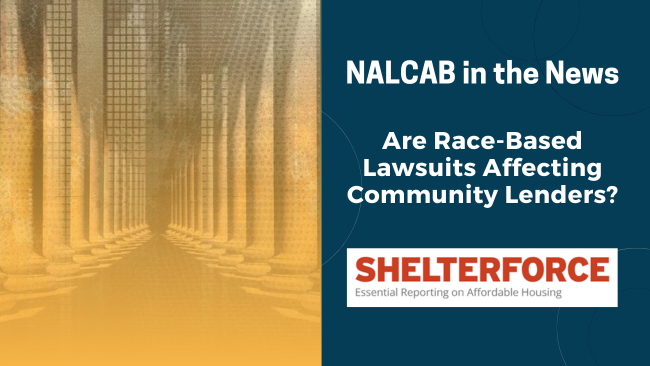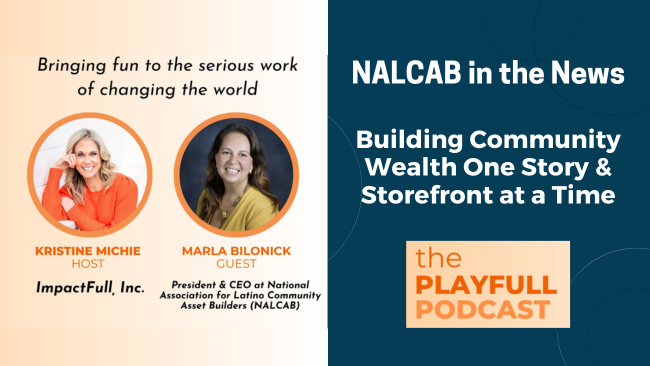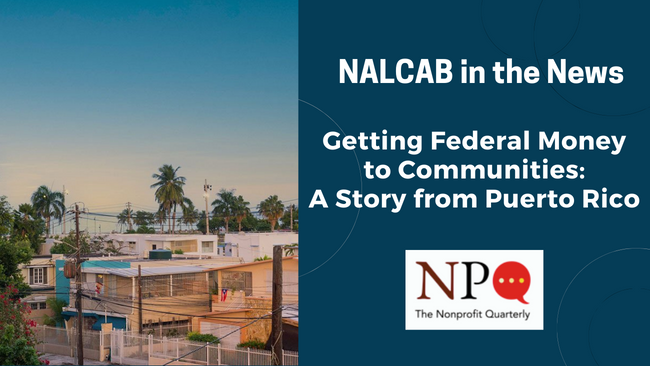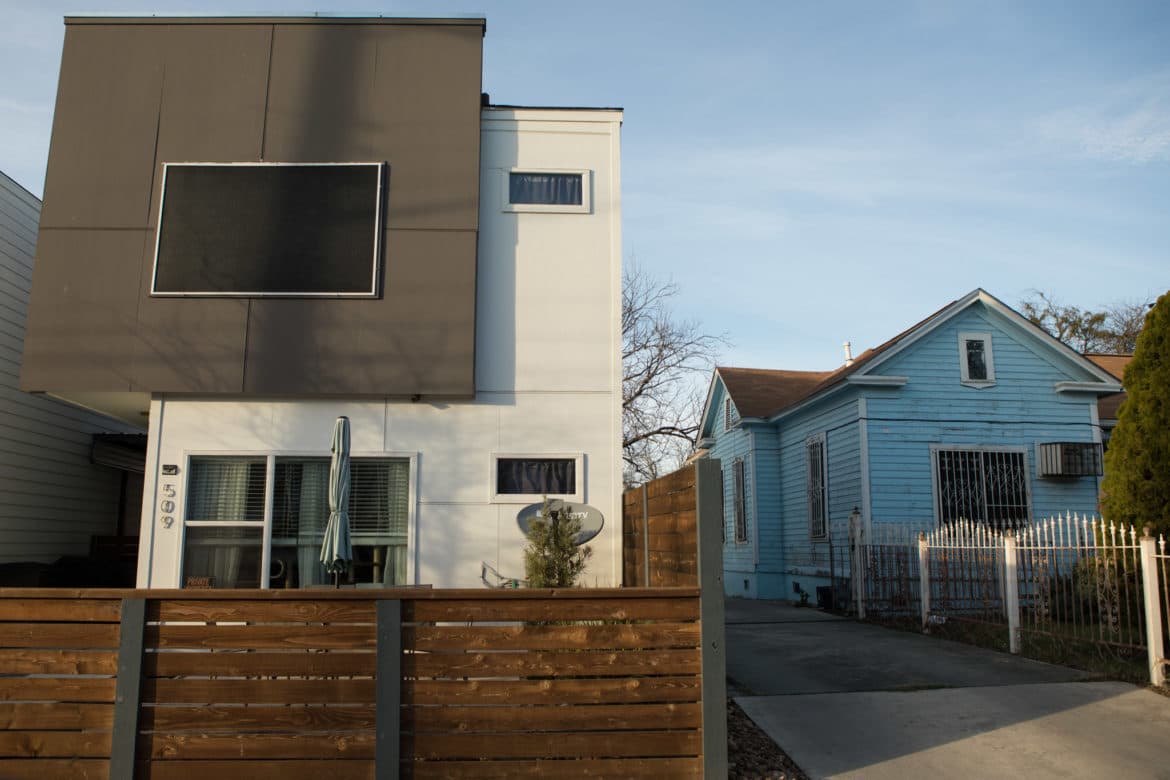
A new report released by the National Association of Latino Community Asset Builders (NALCAB) shows which parts of San Antonio may be vulnerable to losing affordable housing, with neighborhoods within Loop 410 – especially those east and south of downtown – most affected.
The City’s Housing Commission to Protect and Preserve Dynamic and Diverse Neighborhoods will use the report to develop a “toolkit” to make policy recommendations that slow the negative effects of gentrification – specifically displacement – and expand affordable housing in San Antonio’s urban core.
The toolkit is important because “we all recognize [gentrification] is happening in our community,” said Veronica Soto, director of the City’s Neighborhood and Housing Services Department. “Since I’ve been here for the last seven months, it’s clear that it has become a pressing issue.”
Click here to download the 53-page report.
The Housing Commission was tasked in 2015 with designing affordable housing policy, but it is unclear if the commission, or the new Housing Policy Task Force formed by Mayor Ron Nirenberg, will recommend policies for City Council consideration.
Currently, 44 percent of renters in the city pay more than 30 percent of their monthly income for housing, the NALCAB analysis shows.
NALCAB Executive Director Noel Andrés Poyo on Tuesday night highlighted the demographic and real estate market trends that contribute to an increasingly short supply of affordable housing in the city. The Housing Commission tasked NALCAB with developing the analysis last May.
Poyo said affordable housing includes a range of housing choices that are considered affordable to at least half of households in San Antonio. Factors such as population growth, public investment, new housing production, and unstable incomes may impact affordable housing stock.
Poyo suggested that the commission examine rapidly changing neighborhoods as proxies for areas that may be vulnerable to losing affordable housing. The analysis ranked Census tracts in San Antonio on a scale from 1 to 4, with 4 representing the greatest amount of change measured in increase in rent, education level, median household income, white (non-Hispanic) population, and owner-occupied rent from 2000 to 2015. (An “owner-occupied rent” household is one in which the owner also lives on the rental property.)
Rapidly changing neighborhoods that scored a 3 or 4 include Dignowity Hill, Denver Heights, Highland Park, King William, and Mission Concepción.

NATIONAL ASSOCIATION OF LATINO COMMUNITY ASSET BUILDERS / NALCAB
NALCAB presentation slide showing rapidly changing census tracts on a scale of 1 to 4.
Areas northwest and southwest of downtown within Loop 410 also are experiencing single-family home value appreciation above the citywide average, according to the analysis, which used proprietary data purchased from HouseCanary in combination with Bexar County Appraisal District and U.S. Census data.
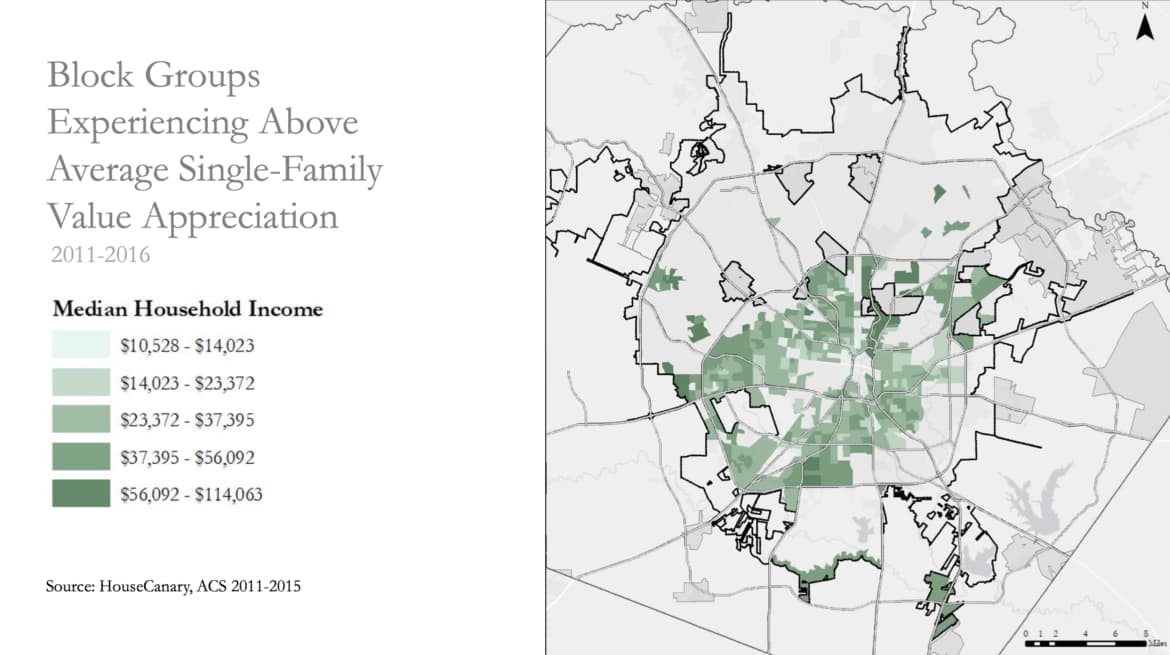
NATIONAL ASSOCIATION OF LATINO COMMUNITY ASSET BUILDERS / NALCAB
NALCAB presentation slide showing neighborhoods with fast appreciated single family home values.
Poyo noted that housing trend data from HouseCanary portrays San Antonio’s current housing market more accurately than that of Bexar County, which shows an approximately two-year lag on current conditions.
During the presentation, NALCAB analysts also discussed unsubsidized affordable housing in neighborhoods that are experiencing rapid appreciation rates. This makes these areas vulnerable to price increases. (This form of housing is also known as “naturally-occuring” affordable housing.) Neighborhoods northwest of downtown, including the Pearl and Mahncke Park neighborhoods, as well as much of Alamo Heights, were singled out as having a significant amount of affordable housing stock that is vulnerable to price increases.
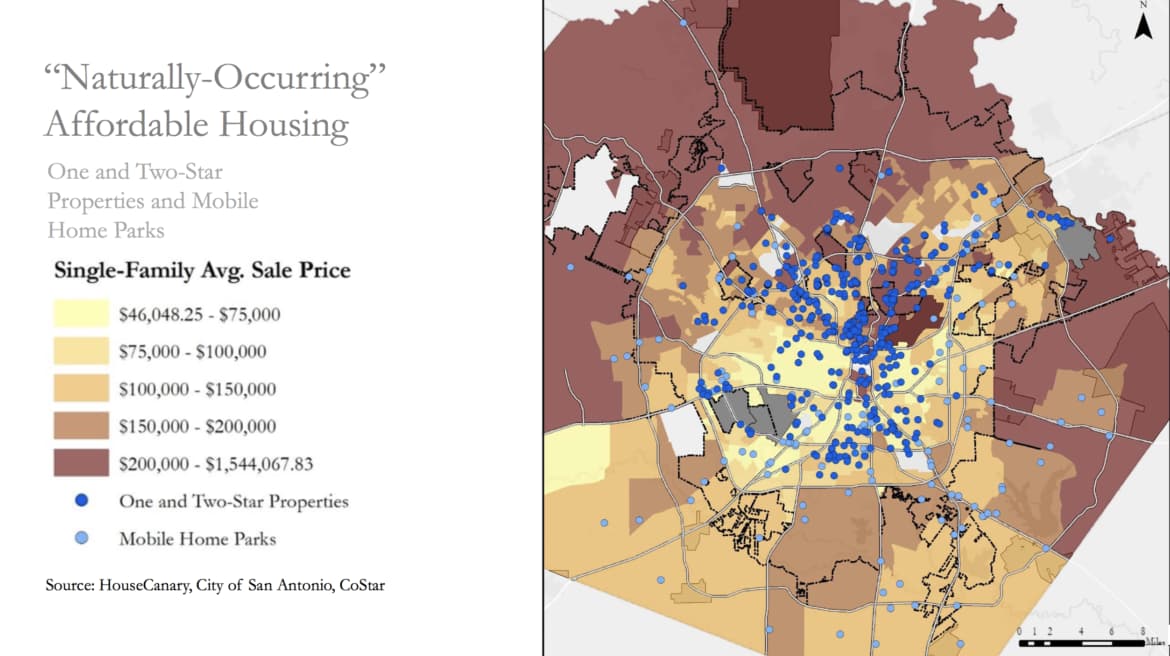
NATIONAL ASSOCIATION OF LATINO COMMUNITY ASSET BUILDERS / NALCAB
NALCAB presentation slide showing where affordable housing naturally occurs.
The Housing Commission is expected to make recommendations for the toolkit after it receives and studies the report.
Much of the information in the report, several commissioners noted, is already well-known from anecdotal observations in the community.
The need to focus on mobile home parks and subsidized housing in rapidly developing areas is “low-hanging fruit,” said Commissioner Debra Guerrero, vice president of governmental affairs for the NRP Group. “It’s those [neighbors] on the tipping point” of displacement that she hoped the report would expose.
“I appreciate the information,” Guerrero said, but she questioned how it could be used to prevent present-day displacement.
Poyo acknowledged that the data is limited in its scope and doesn’t come with all the answers, but said the report will provide baseline information on which to base policy formation.
“[Policy formation is] not going to happen without a systematic approach and a data set,” he said.
The report is a good starting point, said Commissioner Jim Bailey, associate principal for Alamo Architects. If the City is going to start committing public dollars to specific areas, the report provides another “layer of information to allow us to target where those dollars are going to go.”
Former Mayor Ivy Taylor originally created the Housing Commission to design affordable housing policy. That role has since shifted to Nirenberg’s Housing Policy Task Force, which is charged with developing a policy framework to address pressing affordable housing challenges, according to the City’s website.
Who will use the toolkit and to what end it will shape future housing policy, is still uncertain, Soto said.
She noted that several current Housing Commission members have been asked to participate in “technical working groups” created by the Mayor’s Housing Policy Task Force.
“At some point we do have to have the conversation about if the Housing Commission is charged with this toolkit, does it make sense that these recommendations be folded into larger work?” she said.
“I imagine [the toolkit] will have some prescriptive things … but [it] also may have some policy or programmatic items. The toolkit is the harder part.”
Click here for more details.
Related Posts
July 19, 2024 at 09:41 am
(REUTERS) Capital One pledges $265 billion in lend ...Posted by Hallie Chavez
...
June 17, 2024 at 02:10 pm
(SHELTERFORCE) Are Race-Based Lawsuits Affecting C ...Posted by Hallie Chavez
...
January 18, 2024 at 07:54 pm
(THE PLAYFUL PODCAST) Building Community Wealth On ...Posted by Nidia Alvarado
...
January 10, 2024 at 04:08 pm
(NPQ) Getting Federal Money to Communities: A Stor ...Posted by Hallie Chavez
...



